
(Order Lepidoptera, Moths)
Invertebrates Around Las Vegas, Wildlife Around Las Vegas
 |
General: Creosote Bush Bagworms (Thyridopteryx meadii) are curious moths with an interesting biology. Adults males are seldom-seen, medium-sized moths with a wingspan of about 20-30 mm. Their body is hairy, stout, and dark, but the wings are semi-transparent and elongate. Females never fly and lack wings, antennae, and eyes. This species is best recognized by their larval casings, which almost always are made on creosote bushes using bits of creosote leaves and sometimes tiny twigs. The larval case is about 30-40 mm long. Taxonomy: Psychidae (Bagworm Moths Family), Subfamily Oiketicinae, Tribe Acanthopsychini Flight: Mid-summer and fall. Wing Span: About 1 inch. Range: West Texas to southern California. For More Information: See the Butterflies and Moths website. |
 Larval case (bag) made using bits of creosote bush leaves |
Life Cycle of Creosote Bush Bag Worms: Males are winged creatures of the summer night who fly like other moths. In contrast, females live their entire lives inside their "bag" and look like a grub without wings, antennae, or eyes. Males develop and emerge from the lower tip of their bags to fly and find females. They mate with females while they is still inside their bag. Males eventually fly off and die. Mated females produce eggs, but they never oviposit, so the eggs develop inside her body. She eventually dies, the eggs hatch, and the young larvae chew their way out of her body and out of her bag. The larvae crawl off and eventually build their own bags. During summer, when the desert dries out, larvae can go dormant for months while waiting for rains and fresh creosote leaves. The bags are not attached to the creosote stems, and bagworm larvae move around looking for fresh, tasty creosote leaves to eat. Bagworms can attach their bag securely to a branch and seal themselves inside when the desert dries out and they go dormant or when they begin to pupate. |
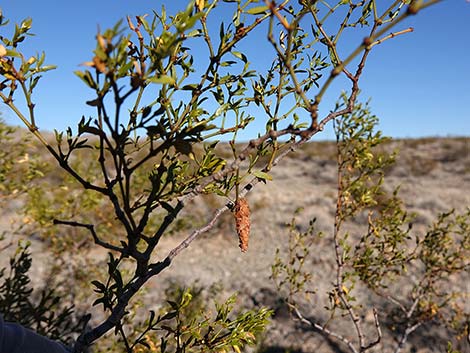 |
 |
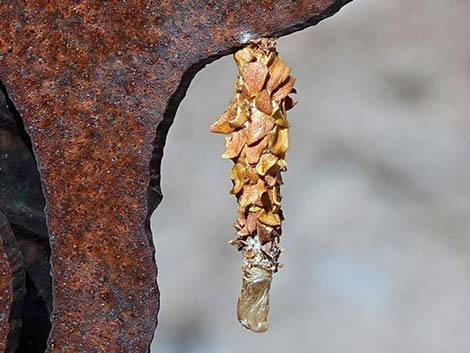 Empty male bagworm casing, note escape tube at end of bag |
 Empty male bagworm casing, note escape tube at end of bag |
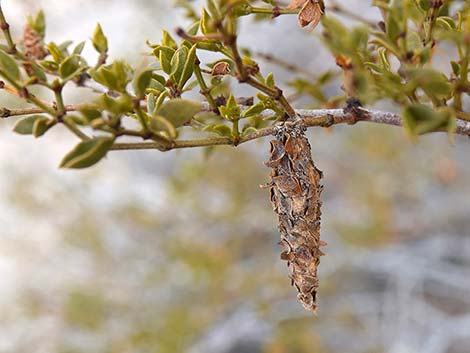 Bags almost always hang vertically |
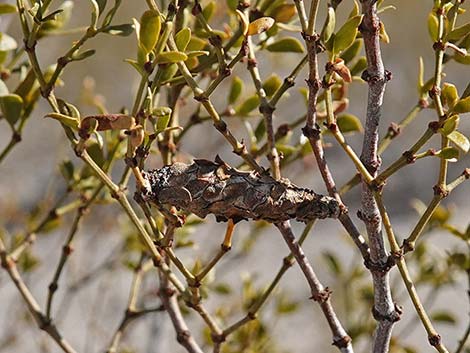 Occasionally, bag are found in other orientations |
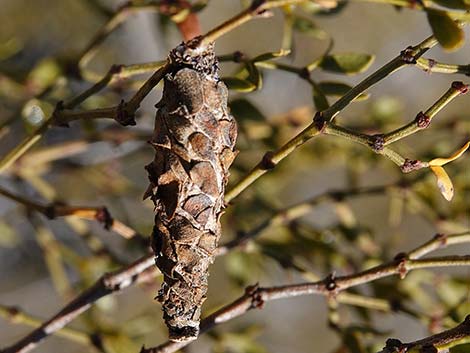 |
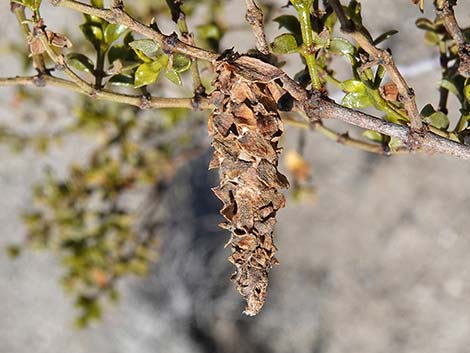 |
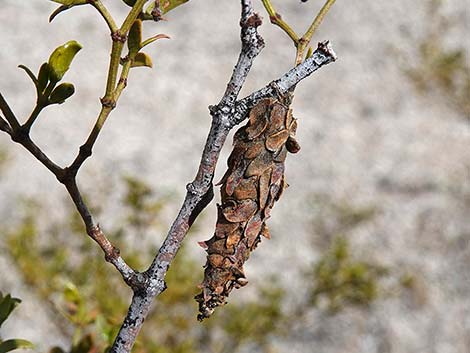 |
 |
Note: All distances, elevations, and other facts are approximate.
![]() ; Last updated 240721
; Last updated 240721
Return to Moths or Butterflies and Moths.
| Butterflies Around Las Vegas | Invertebrates Around Las Vegas | Glossary | Copyright, Conditions, Disclaimer | Home |